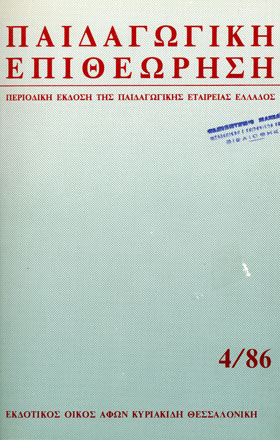Το σχολείο γενικής εκπαίδευσης στην ΕΣΣΔ: εμπειρίες και προοπτικές
Main Article Content
Περίληψη
In this paper Nickandrov presents the achievements of the educational system of the USSR since the Revolution of 1917, its philosophy and its main features, as well as new efforts to overcome shortcomings experienced over the years. The basic component of the Soviet system of education has been the ten-grade, uniform and labour-oriented school of general education, free and open to all children and adolescents. Some of its greatest achievements arc the obliteration of illiteracy, the possibility of all citizens to complete secondary education and, generally, the contribution to the social and economic development of the country. However, under the light of new conditions and new demands, the Soviet school is in the process of some reform according to the Guidelines for reform approved of in 1984. The basic features of this reform are the creation of an eleven-grade school with the addition of one more year so that children start school at six instead of seven, the extension of time for labour training and socially useful work, the improvement of the content of education and the introduction of modern methods and aids of teaching such as the problem approach, the encouragement of independent study, the audio-visual material.
Article Details
Τεύχος
Ενότητα
Άρθρα
